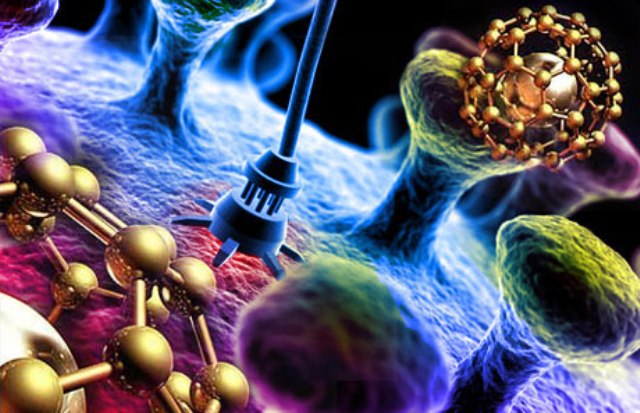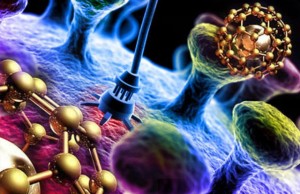This topic is very close to my heart. Everything that comes of the order of 1/1,000,000,000 of a metre is considered nano-scale. So certainly, it cannot be seen by a normal microscope or even a powerful light microscope. Nano-scale and smaller materials can be seen only by high-resolution electron microscope, not even Scanning Electron Microscope (with a resolution of about 10 nm) but only Transmission Electron Microscope (with a resolution of about 50 pm).
Why is it a necessity to reach to this minute level when we know the properties of a substance or a system at a macro scale ? The answer is to increase efficiency and effectiveness. The nano-scale gaps and interstices help us to build or chemically construct favorable energy efficient, cost efficient and high performance structures that, on a macro scale create a lot of wastage, noise and hindrance to functioning because of various reasons. Some of the reasons may be lesser area of contact, high viscosity or material noises like impurities.
When we say living strata, we refer to biological systems. Every system is a nano-scale machine of its own. The natural functionality that happens at nuclear level (DNA, RNA, Proteins) , atomic level (ions, electrons) and even pathological level (few viruses), can be exploited for the betterment of artificial nano-scale devices. Let us take an example of Biosensors. These may be nano-scale man-made devices but substantially follow biological principles. Blood, DNA, Proteins etc. can be tested to get an overview of our physiology. Improving efficiency by applying nano-scale materials to such devices is highly desirable.
This fact itself is evidence for the bright future of two important fields in nanotechnology – Bionanotechnology and Nanobiotechnology. While the former implies important effective functionalities of nanoscale biological systems to nanoscale human-made ones, the latter implies nanoscale human-made systems for the betterment of biological ones. Thus both fields complement the development of each other and collaterally affect contemporary world of today.
Even though it looks an amazing prospect for research, we must always strive for a grey area, rather than a black or white one. Playing with nature, as we see by Ozone hole depletion due to CFC usage, has proven harmful. Nature intends certain things the way they are, and playing with laws of nature can be devastating. Hence, to apply any nanoscale technology, it is of utmost importance to clearly understand the extent of research that may be applied along with pros and cons.





21 Comments. Leave new
Nano technology has gone far beyond our expectation and the greatest application of it is in medical field.. Good job!!
informative
Good work
A very interesting read!
good one.
I have always believed whenever we want to bring change in any matter, find the change in the fundamental unit of it. That is where nanotechnology comes into play. Good article.
Informative …. work
Great work!
Well written and detailed.
Very informative and excellent..!
Fascinating! 🙂
Thank you Junta !!
advances in technology (especially, nanotechnology) will help resolve many of the problems that plague us today. Imagine super efficient solar panels, batteries, artificial photosynthesis, water desalination, no greenhouse emissions…. good times ahead….
If technology is the engine of change , then nanotechnology is the fuel for humanity’s future . Like any fuel we must understand its usable capacity for doing work and apply that knowledge towards addressing human needs
. Kudos .
Looking forward for more such articles
very interesting article..
Informative 🙂
Informative 🙂
Very interesting!
Well Reserched article 😀
Descriptive.
Interesting concept 🙂